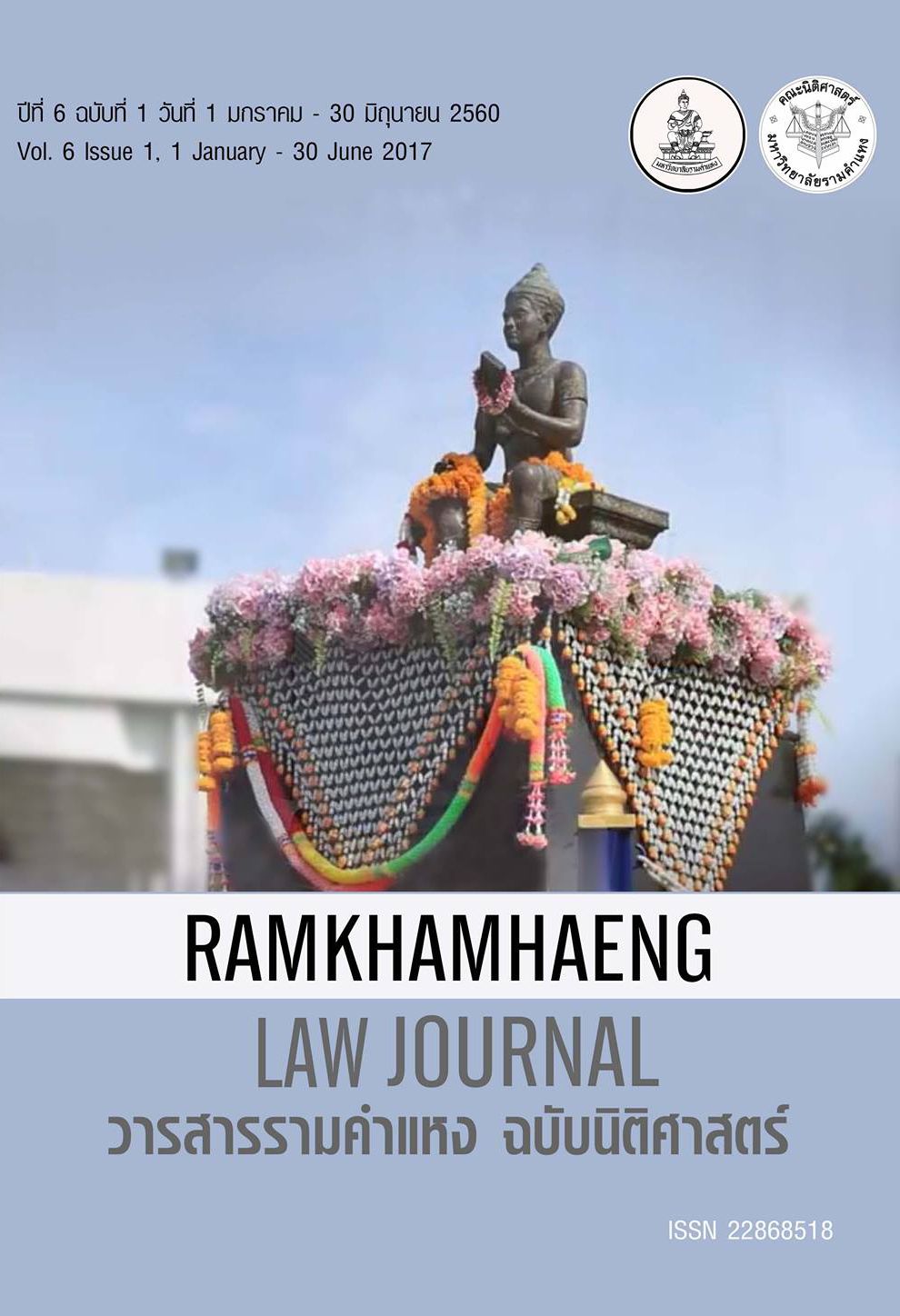แนวโน้มผลกระทบที่อาจเกิดขึ้นจากการจัดทำ ASEAN Common Visa ต่อภาคการท่องเที่ยวของไทยและประเด็นทางกฎหมายที่เกี่ยวข้อง
Main Article Content
Abstract
ประเทศสมาชิกอาเซียนมีแนวคิดที่จะจัดทำการตรวจลงตราร่วมอาเซียน หรือ “ASEAN Common Visa” เพื่ออำนวยความสะดวกด้านการเดินทางและลดความยุ่งยากในกระบวนการด้านวีซ่าให้แก่ผู้ที่ประสงค์จะเดินทางเข้ามาท่องเที่ยวในกลุ่มประเทศสมาชิกอาเซียน และมีเป้าหมายให้การเคลื่อนย้ายบุคคลระหว่างประเทศภายในภูมิภาคอาเซียนเป็นไปอย่างเสรี โดยมุ่งหวังว่า ASEAN Common Visa จะเป็นเครื่องมือหนึ่งที่ทำให้อาเซียนสามารถดึงดูดนักท่องเที่ยวระหว่างประเทศให้เดินทางมาเยือนภูมิภาคเพิ่มขึ้น ซึ่งจะเป็นประโยชน์ทั้งต่อภาคการท่องเที่ยวของแต่ละประเทศสมาชิกและภูมิภาคอาเซียนโดยรวม อีกทั้งเป็นการเสริมสร้างความเชื่อมโยงภายใต้การรวมตัวกันเป็นประชาคมอาเซียน (ASEAN Community) อีกด้วย งานวิจัยฉบับนี้จึงมุ่งศึกษาว่าในกรณีที่มีจัดทำASEAN Common Visaประเทศไทยมีแนวโน้มจะได้รับผลกระทบจากการบังคับใช้ ASEAN Common Visa อย่างไรบ้าง โดยทำการศึกษาวิเคราะห์ในเชิงนิติเศรษฐศาสตร์ กล่าวคือ ในด้านเศรษฐศาสตร์จะวิเคราะห์แนวโน้มผลกระทบของ ASEAN Common Visa ที่มีต่อภาคการท่องเที่ยวของไทยโดยเน้นการอธิบายผลกระทบทางตรง (direct effect) ที่คาดว่าจะก่อให้เกิดความเปลี่ยนแปลงต่อสถานการณ์การท่องเที่ยวของไทยใน3 ประการ ได้แก่ จำนวนนักท่องเที่ยวระหว่างประเทศที่มาเยือน รายได้จากการท่องเที่ยว และการจ้างงานภายในประเทศ รวมทั้งวิเคราะห์ถึงผลกระทบต่อเศรษฐกิจโดยรวมของไทยที่คาดว่าจะเกิดขึ้นในกรณีที่มี ASEAN Common Visa ด้วยส่วนในด้านนิติศาสตร์จะศึกษาวิเคราะห์หลักเกณฑ์และมาตรการทางกฎหมายที่เกี่ยวข้องซึ่งมีผลบังคับใช้อยู่ในปัจจุบันของไทย เพื่อนำเสนอแนวทางในการเตรียมความพร้อมด้านกฎหมายภายในประเทศและประเมินความเป็นได้ในการจัดทำ ASEAN Common Visa สำหรับประเทศไทยในอนาคต
By becoming the ASEAN Community, ASEAN’s ten nations have deepened their alliances in three important areas: Political-Security, the Economy, and the Socio-Cultural sphere. This has led to several successes in economic growth and social progress. There is, however, still a lot to be achieved in the area of Travel and Tourismcooperation. The goal would be to increase the number of international tourist arrivals in ASEAN, which would create more tourism revenues and bring additional prosperity to the region. According to research by the World Tourism Organization, visa policies are among the most influential factors for international tourism, and visa facilitation has contributed to remarkable growth in the tourism sector for many parts of the world.
In this regard, the concept of an ASEAN Common Visa has been suggested by ASEAN leaders as a regional tool that would facilitate non-ASEAN travelers in visa and immigration procedures. An ASEAN Common Visa would be a single visa that would enable the visa holder to travel across all ASEAN countries with only one ASEAN visa. Since not many travelers today would be willing to queue at tendifferent embassies to obtain ten different visas, an ASEAN Common Visa would be a great benefit to travelers who desired to visit more than one country in the region on the same trip. Moreover, a move towards an ASEAN Common Visa would require all ASEAN Member States to implement joint visa policies and adopt common processes. In this way, the development of an ASEAN Common Visa would help standardize visa rules and regulations among ASEAN countries. An ASEAN Common Visa would also enable free, almost seamless movement of ASEAN citizens within ASEAN Member States. That would support the people-to-people connectivity goal of the ASEAN Community. With easier visa procedures under an ASEAN Common Visa scheme, it is widely expected that a common visa for ASEAN would attract more tourists to visit, which would contribute to increases in tourism, employment, business, and economic growth for all of the countries of ASEAN.

